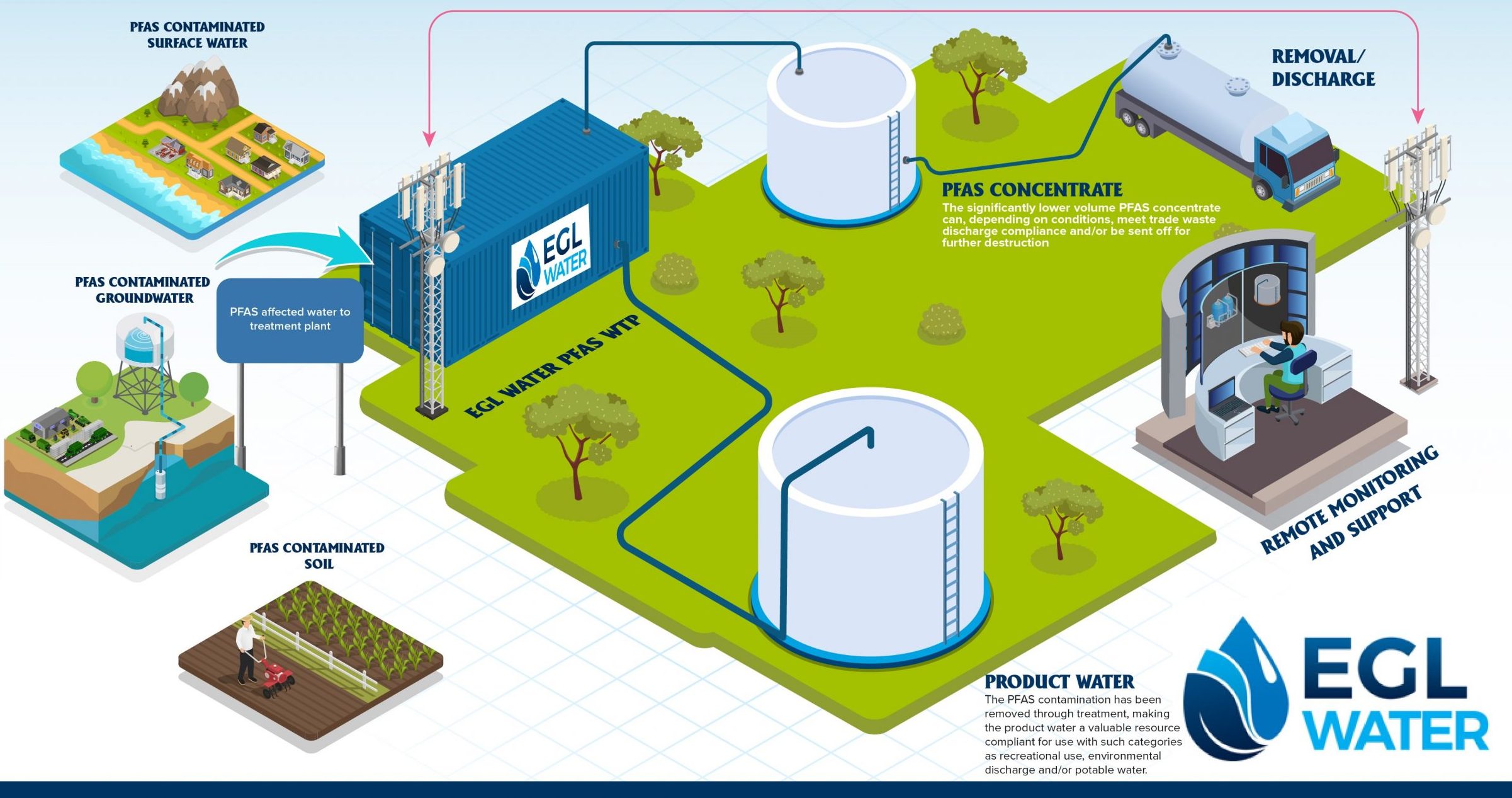Cutting-edge PFAS Therapy Solutions for Safer Water
The enhancing frequency of PFAS contamination in water supplies demands an important assessment of ingenious treatment remedies. Advanced filtration modern technologies and novel chemical treatments existing promising opportunities for lowering these persistent pollutants. Furthermore, arising bioremediation techniques use an even more sustainable method to taking on PFAS challenges. As regulatory structures remain to adapt, recognizing the performance and scalability of these services ends up being extremely important. What effects do these developments hold for public health and wellness and ecological remediation, and just how can stakeholders properly implement them in diverse contexts?
Overview of PFAS Contamination
PFAS contamination has actually become a substantial ecological and public health problem. Per- and polyfluoroalkyl compounds (PFAS) are a group of synthetic chemicals known for their determination in the atmosphere and human body, leading them to be typically referred to as "forever chemicals." These substances have actually been commonly utilized in different markets, consisting of firefighting foams, water-repellent materials, and food packaging, primarily as a result of their water- and grease-resistant homes.
The extensive use of PFAS has actually caused their discovery in dirt, water materials, and even in the blood of humans and pets. Research studies have linked PFAS direct exposure to many health concerns, including developmental effects in babies, immune system dysfunction, and numerous types of cancer. In addition, the ecological determination of these substances complicates their destruction and removal, elevating worries about lasting environmental impacts.
Governing bodies are progressively implementing rigid guidelines to monitor and lower PFAS levels in alcohol consumption water and other ecological mediums. As recognition of PFAS contamination grows, it has actually become essential for areas and industries to look for reliable therapy services to minimize exposure and secure public health.
Advanced Filtration Technologies
As the urgency to address PFAS contamination increases, progressed filtration innovations have actually become an essential component in the remediation initiatives aimed at eliminating these relentless chemicals from water sources. These innovations utilize sophisticated systems to successfully target and record PFAS compounds, which are infamously resistant to traditional therapy approaches.
One of the most appealing strategies is using granular triggered carbon (GAC), which adsorbs PFAS particles because of its high surface location and permeable structure. This method has been commonly carried out in both municipal and industrial settings, demonstrating significant decreases in PFAS focus. Furthermore, ion exchange resins have acquired traction, especially designed to precisely bind PFAS ions from water, hence promoting their removal.
Membrane layer filtration technologies, such as reverse osmosis and nanofiltration, also show efficacy in PFAS removal by physically separating impurities from water - pfas management. These systems can attain high degrees of pureness, making them appropriate for alcohol consumption water applications
Chemical Treatment Technologies
Countless chemical therapy technologies are being discovered to successfully attend to PFAS contamination in water products. One encouraging technique includes using advanced oxidation processes (AOPs), which make use of effective oxidants such as ozone, hydrogen peroxide, or chlorine dioxide integrated with UV light to break down PFAS compounds right into much less dangerous compounds. This technique has shown effectiveness in lab settings, revealing potential for scalability in real-world applications.
Another cutting-edge approach is the advancement of ion-exchange resins especially created to target PFAS. These resins can uniquely adsorb PFAS substances from water, enabling their elimination during treatment procedures. Recent advancements have actually improved the performance and his explanation capability of these resins, making them a favorable choice for water therapy facilities.
In addition, researchers are investigating making use of chemical agents like persulfate and ferrous ions to improve the degradation of PFAS in infected water. These agents can generate chemical reactions that assist in the malfunction of persistent PFAS substances.
Emerging Bioremediation Methods
Recent innovations in chemical treatment advancements have paved the method for exploring bioremediation methods as a viable option for addressing PFAS contamination. Bioremediation takes advantage of the all-natural metabolic processes of bacteria to weaken or transform contaminants, making it an appealing approach for tackling consistent impurities like PFAS.
Arising techniques in bioremediation include making use of genetically crafted microorganisms that can particularly target and damage down PFAS substances. These microbial strains are being established for their boosted degradation capabilities, boosting the performance of the removal procedure. Additionally, researchers are checking out the possibility of plant-assisted bioremediation, where certain plant species may uptake and sequester PFAS from polluted dirt and water.
An additional encouraging strategy is the application of bioaugmentation, which involves introducing valuable microorganisms into contaminated atmospheres to increase the deterioration of PFAS. This technique can assist in quicker removal timelines and enhance general efficiency.

Governing Structures and Requirements
A thorough regulative framework is vital for properly taking care of PFAS contamination and ensuring public health defense. The raising acknowledgment of per- and polyfluoroalkyl materials (PFAS) as ecological contaminants has prompted numerous government and state agencies to create criteria that control their existence in water materials. The U.S. Epa (EPA) has established health advisories and is pursuing setting enforceable limits for PFAS in alcohol consumption water.
State-level laws vary considerably, with some states adopting more stringent guidelines than those proposed by the EPA. These regulations usually consist of optimum pollutant degrees (MCLs) for certain PFAS substances, tracking requirements, and reporting obligations for water energies. Furthermore, arising structures concentrate on the removal of polluted websites, highlighting the need for reliable treatment modern technologies.

Final Thought
Finally, the growth and implementation pfas management of cutting-edge PFAS treatment solutions are vital for dealing with the prevalent problem of water contamination. Advanced filtration modern technologies, chemical treatments, and arising bioremediation strategies jointly provide a multifaceted strategy to successfully reduce and break down PFAS levels. As governing structures remain to develop, incorporating these modern technologies will certainly be vital to guard public health and wellness and recover the stability of infected water sources, eventually adding to a cleaner and much safer setting.